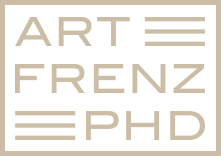 The process of improving one’s mental health may be viewed as a journey of becoming a more authentic and genuine person. The sculptor has a sense of the finished piece inside the chunk of stone and chips away to remove the parts that don’t belong and preserves the parts that do. It’s a unique process of getting rid of, and keeping, at the same time. He discards a piece here, saves a part there, steps back to review, and repeats over and over.
The process of improving one’s mental health may be viewed as a journey of becoming a more authentic and genuine person. The sculptor has a sense of the finished piece inside the chunk of stone and chips away to remove the parts that don’t belong and preserves the parts that do. It’s a unique process of getting rid of, and keeping, at the same time. He discards a piece here, saves a part there, steps back to review, and repeats over and over.
Who am I, really?
Discovering who we really are is not always easy. From the beginning, we’ve been given many messages and ideas—from people, culture, the media—about what we should or shouldn’t think, feel, want or be. Naturally, as young children, we tended to believe much of what the adults and the world told us. “You’re the smart one; she’s the pretty one.” “You’re the follower; he’s the leader.” “Trust us, you don’t want that; you’ll be much happier with this.” Maybe these messages were accurate, and maybe not. Maybe these messages were true at one point in time, but are no longer.
I always liked things that are real over things that are imitation. Even if I don’t care for the cuisine, I prefer to eat a dish authentically prepared over one of my favorite foods made with artificial ingredients. If it’s authentic, I can enjoy a song of a genre I don’t really like more than an inauthentic attempt in a style that I love. For me, authenticity trumps style.
The process of authentication
Now unlike a sculpture, a person is never a finished product, but an ongoing work evolving and growing always. And unlike sculpting, where the artist and the piece are two different entities, with a person the two are the same. It’s as if the artist is sculpting him- or herself. The person can get help from feedback from trusted friends and advisors, but ultimately, he or she makes the decision to change what may be a false part of self in order to allow a more genuine part to emerge.
This is a process of shedding parts of ourselves that feel false or features that don’t belong. The process starts with a review of who we are. We step back and look at our selves objectively. Am I being my real self? Or am I trying too hard to be something I’m really not? Alternatively, am I allowing my true self to sit in the shadow, afraid to step out into the light? What do I believe about myself that was never, or is no longer, true?
The process requires several key ingredients: faith, trust, courage and acceptance. It helps to have a faith in oneself that a healthy person is inside and that the natural process is for this real person to emerge. It is also important to be able to trust others, carefully chosen, to give sound feedback and support along the way. Courage will be needed in order to step out of the comfort zone and let go of certain beliefs and behaviors that are familiar but no longer serving us well. Finally, there needs to be an acceptance of who we are and are becoming, and an acceptance that some will love and appreciate this person, and others have the right to prefer something different.
Art Frenz, Ph.D.
Image courtesy of pedroperez / morguefile.com
